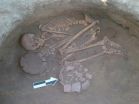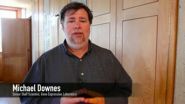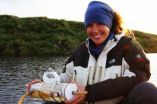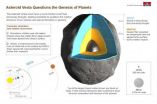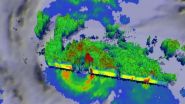(Press-News.org) This news release is available in French.
This news release is available in French.
This news release is available in French.
An international team of researchers has found new evidence that our prehistoric ancestors had a detailed understanding of plants long before the development of agriculture.
By extracting chemical compounds and microfossils from dental calculus (calcified dental plaque) from ancient teeth, the researchers were able to provide an entirely new perspective on our ancestors' diets. Their research suggests that purple nut sedge (Cyperus rotundus) – today regarded as a nuisance weed – formed an important part of the prehistoric diet.
Crucially, the research, published in PLOS ONE and led by the Universitat Autònoma de Barcelona and the University of York, suggests that prehistoric people living in Central Sudan may have understood both the nutritional and medicinal qualities of this and other plants.
The research was carried out at Al Khiday, a pre-historic site on the White Nile in Central Sudan. It demonstrates that for at least 7,000 years, beginning before the development of agriculture and continuing after agricultural plants were also available the people of Al Khiday ate the plant purple nut sedge. The plant is a good source of carbohydrates and has many useful medicinal and aromatic qualities.
Lead author Karen Hardy, a Catalan Institute for Research and Advanced Studies (ICREA) Research Professor at the Universitat Autònoma de Barcelona (UAB) and an Honorary Research Associate at the University of York, said: "Purple nut sedge is today considered to be a scourge in tropical and sub-tropical regions and has been called the world's most expensive weed due to the difficulties and high costs of eradication from agricultural areas. By extracting material from samples of ancient dental calculus we have found that rather than being a nuisance in the past, its value as a food, and possibly its abundant medicinal qualities were known. More recently, it was also used by the ancient Egyptians as perfume and as medicine.
"We also discovered that these people ate several other plants and we found traces of smoke, evidence for cooking, and for chewing plant fibres to prepare raw materials. These small biographical details add to the growing evidence that prehistoric people had a detailed understanding of plants long before the development of agriculture."
Al Khiday is a complex of five archaeological sites which lie 25km south of Omdurman; one of the sites is predominantly a burial ground of pre-Mesolithic, Neolithic and Later Meroitic age. As a multi-period cemetery, it gave the researchers a useful long-term perspective on the material recovered.
The researchers found ingestion of the purple nut sedge in both pre-agricultural and agricultural periods. They suggest that the plant's ability to inhibit Streptococcus mutans, a bacterium which contributes to tooth decay, may have contributed to the unexpectedly low level of cavaties found in the agricultural population.
Dr Stephen Buckley, a Research Fellow at the University of York's BioArCh research facility, conducted the chemical analyses. He said: "The evidence for purple nut sedge was very clear in samples from all the time periods we looked at. This plant was evidently important to the people of Al Khiday, even after agricultural plants had been introduced."
Dr Donatella Usai, from the Instituto Italiano per l'Africa e l'Oriente in Rome led the excavation and Dr Tina Jakob from Durham University's Department of Archaeology, performed the analysis of the human remains at Al Khiday. Anita Radini, an Archaeobotanist at the University of Leicester Archaeological Service (ULAS) and a PhD candidate at BioArCh, University of York, contributed to the analysis of microfossils found in the dental calculus samples.
Dr Usai said: "Al Khiday is a unique site in the Nile valley, where a large population lived for many thousands of years. This study demonstrates that they made good use of the locally available wild plant as food, as raw materials, and possibly even as medicine."
Dr Hardy added: "The development of studies on chemical compounds and microfossils extracted from dental calculus will help to counterbalance the dominant focus on meat and protein that has been a feature of pre-agricultural dietary interpretation, up until now. The new access to plants ingested, which is provided by dental calculus analysis, will increase, if not revolutionise, the perception of ecological knowledge and use of plants among earlier prehistoric and pre-agrarian populations."
Fieldwork was funded by the Italian Minister of Foreign Affairs, Istituto Italiano per l'Africa e l'Oriente, Centro Studi Sudanesi e Sub-Sahariani, and the Universities of Milano, Padova and Parma. The research was endorsed by the National Corporation for Antiquities and Museums (NCAM) of Sudan.
INFORMATION:
Tooth plaque provides unique insights into our prehistoric ancestors' diet
2014-07-16
ELSE PRESS RELEASES FROM THIS DATE:
Tooth plaque provides insight into our prehistoric ancestors' diet
2014-07-16
A new study may provide evidence that our prehistoric ancestors understood plant consumption and processing long before the development of agriculture, according to a study published July 16, 2014 in the open-access journal PLOS ONE by Stephen Buckley from University of York and colleagues.
Evidence of plant consumption before the adoption of agriculture is difficult to find; such evidence is meaningful for understanding how much prehistoric people knew about the ecology and potential therapeutic properties of plants. Scientists in this study extracted and analyzed chemical ...
The 'obesity paradox': Cardiovascular mortality lowest among overweight patients
2014-07-16
Rochester, MN, July 16, 2014 – High body mass index (BMI) is associated with multiple cardiovascular diseases. However, emerging data suggest that there is an "obesity paradox," that being overweight may actually protect patients from cardiovascular mortality. Investigators have now confirmed that the risk of total mortality, cardiovascular mortality, and myocardial infarction is highest among underweight patients, while cardiovascular mortality is lowest among overweight patients, according to two reports published today in Mayo Clinic Proceedings.
Currently more than ...
Brain of world's first known predators discovered
2014-07-16
An international team of paleontologists has identified the exquisitely preserved brain in the fossil of one of the world's first known predators that lived in the Lower Cambrian, about 520 million years ago. The discovery revealed a brain that is surprisingly simple and less complex than those known from fossils of some of the animal's prey.
The find for the first time identifies the fossilized brain of what are considered the top predators of their time, a group of animals known as anomalocaridids, which translates to "abnormal shrimp." Long extinct, these fierce-looking ...
One injection stops diabetes in its tracks
2014-07-16
VIDEO:
Salk scientists explain the implications of their latest finding and how the treatment reverses symptoms of type 2 diabetes in mice without side effects.
Click here for more information.
LA JOLLA—In mice with diet-induced diabetes—the equivalent of type 2 diabetes in humans—a single injection of the protein FGF1 is enough to restore blood sugar levels to a healthy range for more than two days. The discovery by Salk scientists, published today in the journal Nature, could ...
Study: Climate-cooling arctic lakes soak up greenhouse gases
2014-07-16
New University of Alaska Fairbanks research indicates that arctic thermokarst lakes stabilize climate change by storing more greenhouse gases than they emit into the atmosphere.
Countering a widely-held view that thawing permafrost accelerates atmospheric warming, a study published this week in the scientific journal Nature suggests arctic thermokarst lakes are 'net climate coolers' when observed over longer, millennial, time scales.
"Until now, we've only thought of thermokarst lakes as positive contributors to climate warming," says lead researcher Katey Walter Anthony, ...
Scientists find way to trap, kill malaria parasite
2014-07-16
Scientists may be able to entomb the malaria parasite in a prison of its own making, researchers at Washington University School of Medicine in St. Louis report July 16 in Nature.
As it invades a red blood cell, the malaria parasite takes part of the host cell's membrane to build a protective compartment. To grow properly, steal nourishment and dump waste, the parasite then starts a series of major renovations that transform the red blood cell into a suitable home.
But the new research reveals the proteins that make these renovations must pass through a single pore ...
Asteroid Vesta to reshape theories of planet formation
2014-07-16
EPFL researchers have a better understanding of the asteroid Vesta and its internal structure, thanks to numerical simulations and data from the space mission Dawn. Their findings, published today in Nature, question contemporary models of rocky planet formation, including that of Earth.
With its 500 km diameter, the asteroid Vesta is one of the largest known planet embryos. It came into existence at the same time as the Solar System. Spurring scientific interest, NASA sent the Dawn spacecraft into Vesta's orbit for one year between July 2011 and July 2012.
Data gathered ...
NASA sees Typhoon Rammasun exit the Philippines
2014-07-16
Typhoon Rammasun passed through the central Philippines overnight and NASA satellite imagery showed that the storm's center moved into the South China Sea. NASA's TRMM satellite showed the soaking rains that Rammasun brought to the Philippines as it tracked from east to west.
Before Rammasun made landfall, the Tropical Rainfall Measuring Mission or TRMM satellite passed over the storm and measured cloud heights and rainfall rates. On July 14, 2014 at 18:19 UTC (2:19 p.m. EDT), TRMM spotted powerful, high thunderstorms reaching heights of almost 17km (10.5 miles). Rain ...
Researchers demonstrate health risks posed by 'third hand' tobacco smoke
2014-07-16
Research led by the University of York has highlighted the potential cancer risk in non-smokers – particularly young children – of tobacco smoke gases and particles deposited to surfaces and dust in the home.
Until now, the risks of this exposure known as 'third hand tobacco smoke' have been highly uncertain and not considered in public policy.
However, a new study published in the journal Environment International, has estimated for the first time the potential cancer risk by age group through non-dietary ingestion and dermal exposure to third hand smoke. The results ...
Squid skin protein could improve biomedical technologies, UCI study shows
2014-07-16
Irvine, Calif., July 16, 2014 – The common pencil squid (Loliginidae) may hold the key to a new generation of medical technologies that could communicate more directly with the human body. UC Irvine materials science researchers have discovered that reflectin, a protein in the tentacled creature's skin, can conduct positive electrical charges, or protons, making it a promising material for building biologically inspired devices.
Currently, products such as retinal implants, nerve stimulators and pacemakers rely on electrons – particles with negative charges – to transmit ...
